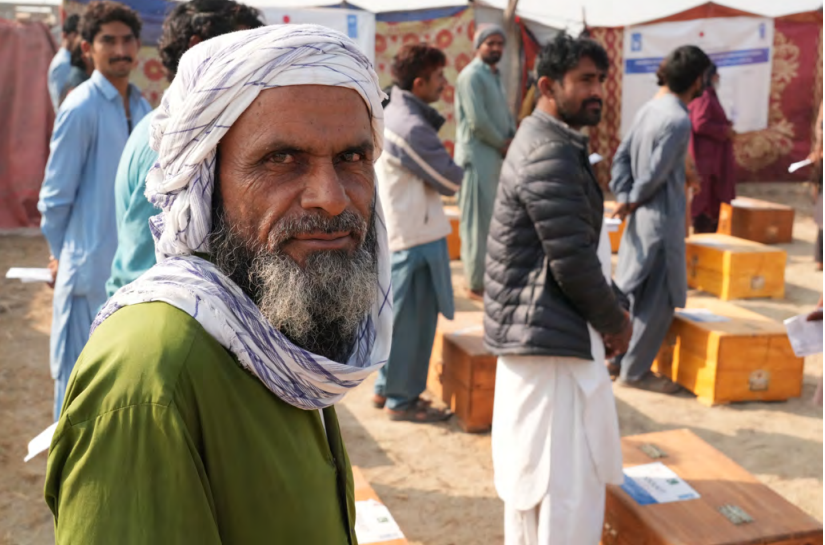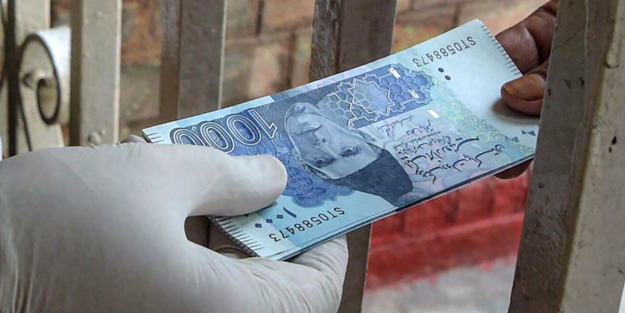It is estimated that philanthropic giving ranges between PKR 300-
800 billion a year. Channeling charity donations into a more
strategic form of philanthropy aligned to the SDGs is the way
forward..
Pakistan is categorized one of the most charitable countries in the world and has deep-rooted norms of giving. Evidence shows that an overwhelming majority of people in Pakistan are engaged in some form of philanthropic giving either in cash, in kind or volunteering time with an estimated amount of approximately PKR 300 billion in a given year. The giving impulse is mostly influenced by religious and religiously motivated factors, the most important ones being Zakat, Sadqah and helping those in 1 need. Despite having a strong giving culture in Pakistan, with people donating over 1 percent of GDP annually, a significant part of the charity goes directly to individuals and less to organizations. Even though philanthropy is a huge potential resource for social sector investments, it remains unaligned with national development goals and is under-leveraged to boost Pakistan’s development landscape.
Transforming traditional modes of charity into a more strategic form of philanthropy is critical to achieving the SDGs.
Pakistan is faced with a significant financial gap that hinders its path to achieving its SDGs. It is estimated that an annual spending of about 16 percent of the GDP is required by 2030 to 2 achieve our SDG targets. However, Pakistan’s fiscal reality presents a different scenario. The country has mounting debt, with the total Gross Public Debt reaching PKR 76,000 billion 3 in March 2025 . A substantial part of the budget is used for debt servicing,
To reimagine and realign philanthropy for development, multiple stakeholders of Pakistan’s philanthropic ecosystem must be engaged to harness the giving potential and pivot it towards impact-oriented and strategic social investments that supplement national development goals. This vision can be ensured and implemented through various initiatives, particularly blended finance, impact investing and public-private partnerships.
Combining public and private investments with funds generated through philanthropic giving helps garner greater capital and asset-building. This blended finance approach is exemplified by the Pakistan Microfinance Investment Company (PMIC) which came into existence through collaboration among the United Kingdom’s Foreign, Commonwealth and Development Office, the German Development Bank, and the Pakistan Poverty Alleviation Fund. This initiative is supported by a combination of philanthropic giving, private capital, and concessional donor funds, thereby empowering it to direct funds to microfinance institutions that cater to millions of people from underprivileged socio-economic backgrounds, particularly women. Through SDG-oriented projects such as solar-powered homes to promote sustainable green energy, PMIC de-risks investment for private actors, mainly drawing from donor and philanthropic capital for a profound social impact.
 Another pertinent model to ensure strategic harnessing of the giving potential is impact investing, where philanthropic funds are channeled to social enterprises focusing on tangible social benefits and financial returns. This model is exemplified by Acumen, a global non-profit impact investment fund that deploys risk-tolerant investments into enterprises committed to alleviating poverty while generating financial returns. Through investments in startups such as Husk Power Systems, they provide solar mini-grid systems to remote areas that ensure their support is aligned with the SDGs, particularly SDG 7 and SDG 13, which aim to provide affordable and clean energy and tackle climate change.
Another pertinent model to ensure strategic harnessing of the giving potential is impact investing, where philanthropic funds are channeled to social enterprises focusing on tangible social benefits and financial returns. This model is exemplified by Acumen, a global non-profit impact investment fund that deploys risk-tolerant investments into enterprises committed to alleviating poverty while generating financial returns. Through investments in startups such as Husk Power Systems, they provide solar mini-grid systems to remote areas that ensure their support is aligned with the SDGs, particularly SDG 7 and SDG 13, which aim to provide affordable and clean energy and tackle climate change.
Public-private partnerships also play a crucial role in ensuring that people’s donations are mainly used for a cause that aligns with sustainable development goals and national policy. Using The Citizens Foundation (TCF) as a best practice model, further opportunities into this process can be explored across organizations and institutions. While TCF began as a purely philanthropic initiative, it has now expanded into a public-private partnership model in collaboration with provincial governments. In Sindh, TCF has partnered with the provincial government to oversee the management of schools that are underperforming and upgrade their capacity and infrastructure through the organization’s operational model, which seeks to enhance the learning environment through better-trained teachers, improved infrastructure and a more relevant curriculum. Similarly, in Punjab, the public-private partnership of Danish Schools has effectively manifested a more cost-effective, inclusive, and learning-oriented model. Aligning their work with SDG 4 and SDG 10, TCF ensures that the majority of students from underprivileged socioeconomic backgrounds can benefit by providing quality education.
To realign philanthropy for development, Pakistan’s philanthropic ecosystem must be engaged to move towards strategic national development goals using blended finance, impact investing and public-private partnerships.
 To promote strategic philanthropy, an enabling environment must be created by improving the currently fragmented legal framework and providing fiscal incentives through greater tax benefits for donations directed toward SDG-aligned initiatives. Additionally, enhancing data infrastructure by establishing a national philanthropy database can aid in tracking and measuring the impact of contributions. This will bolster donor confidence in SDG-aligned projects and encourage more people to give thoughtfully and strategically for the greater good of fellow citizens.
To promote strategic philanthropy, an enabling environment must be created by improving the currently fragmented legal framework and providing fiscal incentives through greater tax benefits for donations directed toward SDG-aligned initiatives. Additionally, enhancing data infrastructure by establishing a national philanthropy database can aid in tracking and measuring the impact of contributions. This will bolster donor confidence in SDG-aligned projects and encourage more people to give thoughtfully and strategically for the greater good of fellow citizens.
The 2022 floods displaced millions and caused economic losses of up to 4.8 percent of GDP. These disasters are a stark reminder that climate resilience cannot be denied. By harnessing the untapped potential of philanthropy, development financing for climate adaptation, renewable energy sources, and risk management strategies can achieve gainful outcomes. Similarly, the recent shrinking of foreign aid necessitates mobilizing local philanthropy for streamlined and impact-oriented development outcomes. Major donors like the USAID have cut funding to Pakistan. y. As a result, education and health sectors, among others, are faced with challenges of reduced funding. This situation requires that local resources for development financing and investments be tapped so that support is locally-led and aligned with the global development agenda.
Transforming charity into capital and asset development accompanied by a favorable philanthropy ecosystem can unlock new avenues for sustainable development. However, it is no easy feat. This is a paradigm shift that requires concerted efforts from all third-sector stakeholders to effectively harness and utilize philanthropic giving as a tool for systemic change.
As foreign aid shrinks, we must mobilize philanthropy for effective development outcomes, tapping local resources for financing and investments that will ensure support is locally-driven and aligned with global development goals.
Shazia Amjad
The writer is a Executive Director, Pakistan Centre for Philanthropy (PCP)
Published in UNDP Development Advocate Pakistan(DAP) Volume 12, Issue 2, June 2025


